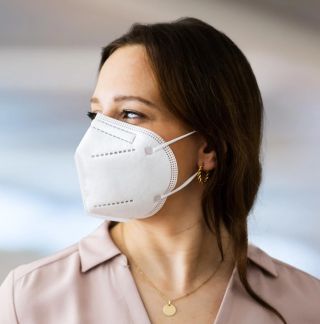
Vol. XXII, No. 1, January 2022
Want to avoid Omicron? Ditch the cloth mask
Back in September, we published an article explaining how Covid is transmitted. In addition to airborne droplets from an infected person that quickly drop to the ground, infectious people transmit smaller virus-carrying atomized particles. These aerosols are quite light and float in the air. They will linger suspended in the air for several hours far away from their source, especially in poorly ventilated spaces. A good analogy is that aerosols are like second-hand smoke.
Masks can be very effective at stopping the transmission of droplets. However, when it comes to the transmission of aerosols, research has found that most common cloth masks, primarily due to problems with fit, filter only about 10% of exhaled aerosols. The remaining aerosols are redirected, mainly out the top of the mask where it poorly fits over the nose and sometimes out the sides to escape into the ambient air unfiltered.
Many people who are wearing masks are still wearing cloth ones. That's one of the reasons Omicron is spreading so fast. Cloth masks are not very effective. The EPA found that a three-layer knitted cotton mask only blocked 26.5% of particles. Omicron spreads more quickly and efficiently than other known Covid-19 variants, making it highly transmissible - even through thick fabric face masks.

N95 mask
N95, KN95, and KF94 masks are the gold standard for face coverings and prevent at least 95% of airborne particles in the air from entering when they are correctly fitted tight around the face so there are no air gaps or voids around the nose. N95 style masks have three layers. They are constructed from flat, nonwoven mats of fine fibers. The diameter and thickness of the fiber and the ratio of the open space to fibers (porosity) play a role in how the masks collect particles. The middle layer is made of material with an electrostatic charge, which intercepts particles and prevents you from inhaling them. Cloth masks lack all these features in stopping and collecting particles.


